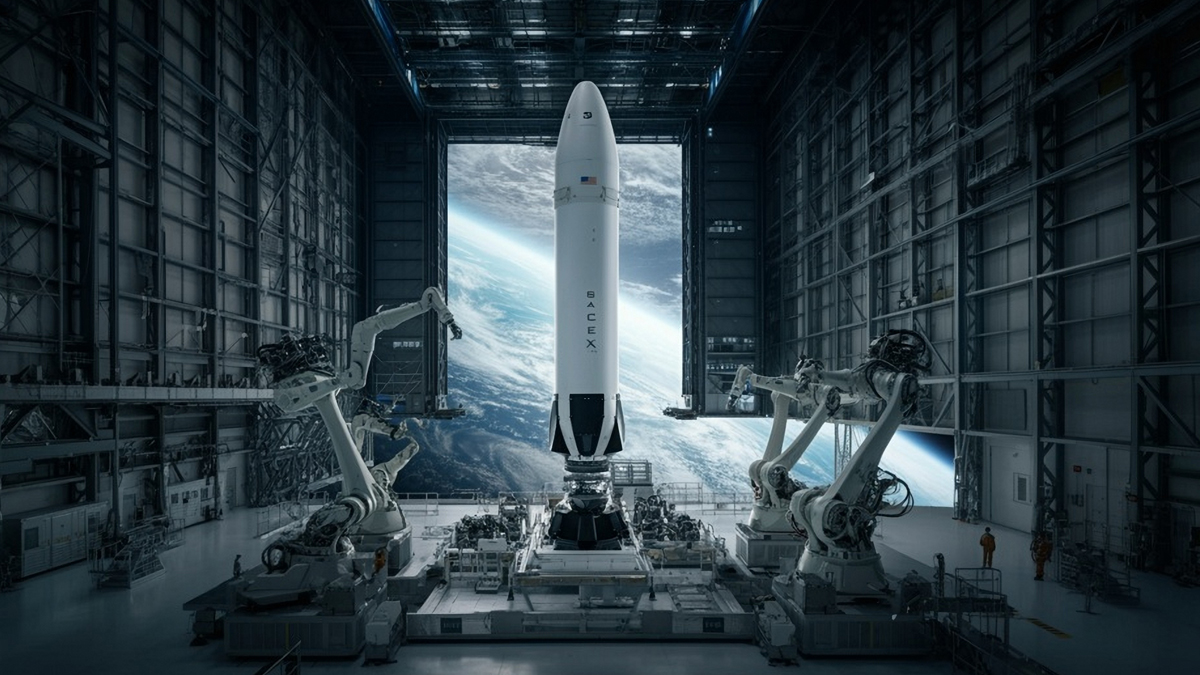
Multiple layers of resiliency are required to build a space environment that is tactically responsive. Jiral Shah, VP of Business Development at Gravitics, described the role of pre-positioned assets in orbit and the importance of mobility and power in space operations. Listen to the full podcast episode, or read our top four takeaways below.
Takeaway 1: A tactically responsive space domain can move as quickly as land, maritime, or air.
“When we think about how we can conduct war in some of the other domains—land, maritime, air—everything is really optimized around this concept of rapid response,” Shah said. To reach that same level of speed and resiliency, space assets will need to be innovative, fast, and multi-functional.
For example, China and Russia have begun conducting dogfighting exercises with satellites. “They’ve grown very advanced and aggressive in demonstrating maneuvers,” Shah said, including performing refueling, robotics, and anti-satellite maneuvers. As these capabilities continue to develop, commercial and military assets in space become more and more vulnerable, and the space industrial base must be able to respond quickly and effectively.
A tactically responsive space environment would address these threats to critical space infrastructure, including strengthening logistics and supply chains.
Takeaway 2: Placing pre-positioned assets in orbit will translate to greater resiliency in wartime.
When logistics and supply chains fail, having multiple layers of resiliency already in place could be crucial. One approach to this is placing pre-positioned assets in space.
“Think of these as large hangars on orbit,” Shah said. “The non-space term that I like to use is a satellite vending machine. It allows you to pre-position something and deploy it on demand, on a tactically relevant timeline.”
These pre-positioned assets could play a crucial role in a conflict where jamming severs the connection between satellites and the ground, or if access to GPS or satcom is disrupted, as satellite connectivity is crucial on the modern battlefield. “Today, a jet does not leave an airfield without satellite coverage. A ship does not leave the port without coverage. Being able to protect those assets is going to be incredibly important.”
Jamming can also severely disrupt the availability of a launch pad. “By pre-positioning assets in orbit, you can instill a higher level of resiliency, and you can ensure that our assets in space are protected when a terrestrial launch pad is not available.”
Takeaway 3: Modular designs and on-orbit assembly techniques will be crucial in constructing infrastructure in space.
To build these large space hangars, Gravitics plans to employ techniques like modular design and on-orbit construction. Modularity will allow a vast array of structures to be built, “from space stations to orbital carriers and everything in-between.”
Using on-orbit construction to build architecture in space will also advance ISAM activities, such as on-orbit repairs and refueling. It could also be used to construct large structures that wouldn’t fit on a rocket. “With on-orbit assembly or manufacturing, you could theoretically 3D print and assemble large antennas that you might not be able to launch,” Shah said.
While on-orbit assembly has historically been led by commercial space, the DoD has begun to pay attention and invest in these technologies. “What we can expect of our sector in the next five years is the ability to build infrastructure that we cannot launch,” Shah said.
“By focusing on manufacturing a common chassis, and manufacturing for scale, we’re actually able to bring the cost of a module down,” Shah said. “[This] increases access to space real estate.”
Shah compared this industry transition to SpaceX’s launch capability, which lowered the barrier of access to space. “I think it will change the game,” he said. “But we have to continue to de-risk a lot of the technology. We need to get more power up there, more common infrastructure to enable those applications.”
Takeaway 4: Mobility and power will always be in demand in space.
Mobility and access to power determine the activities that are possible in space. “From a KPI perspective, you can use those two technology areas to baseline the capability,” Shah said. If an adversary has more mobility capability than you, they will outmaneuver you. If they have more fuel, they will be faster. And if they have more power, they will be able to operate longer and do more.
Nuclear power will be a key part of the future of space activities, according to Shah. “Power is the commodity in space. You cannot do anything without access to reliable, large amounts of power.” In the next decade, both civil and military applications will turn to nuclear, Shah predicted. “Nuclear will be the thing that fundamentally changes everything,” he said.
For more on automation, modular structures and AI/ML, listen to the full podcast episode.
Explore More:
Podcast: Innovative Commercial Solutions, Expanding CASR and Accelerating Space Readiness
Constructing the Next Space Age
Data Centres Are Increasingly Being Launched Into Space, But Must Meet Stringent Requirements
